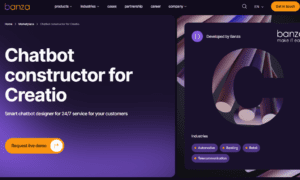Christine Heckart, CEO of Xapa, is redefining how organisations harness AI to drive transformation. Rather than automating tasks, Xapa activates employees by embedding personalised AI mentors, coaches, and assistants into daily workflows. This bottom-up approach fosters behaviour change, accountability, and resilience at scale, bridging the gap between strategy and execution. With a focus on continuous learning, ethical adoption, and distributed leadership, Xapa equips workforces to thrive amid disruption. In this Interview with TechBullion, Heckart’s vision is clear: the future belongs to companies where innovation and adaptability are practiced at every level.
There’s no shortage of AI platforms in the market. What makes Xapa fundamentally different?
Most AI tools focus on automating tasks. Xapa focuses on activating people. We embed personalized AI mentors, coaches, and assistants directly into every employee’s daily workflow. Instead of replacing human capabilities, we’re scaling them. It’s the difference between giving someone a calculator and teaching them mathematics. We’re building the organizational muscle that makes transformation stick.
What does “employee activation” actually mean, and how is it different from traditional training programs?
Employee activation involves embedding behavior change into the daily workflow through what we call “micro-moments”—small, targeted interactions that build skills and habits over time. Traditional training is episodic: you attend a workshop or watch a video, then return to old patterns. Activation is continuous, personalized, and measurable. It’s the difference between learning the theory of swimming in a classroom versus actually getting in the water every day with a coach to practice.
Why is bottom-up activation essential for transformation, especially with AI reshaping work?
The pace of change has outstripped traditional top-down strategies. When transformation trickles down through organizational layers, it loses impact and clarity at every level. McKinsey’s most recent AI research found that 80% of successful AI transformations depend on people learning to think, work, and collaborate differently—only 20% is the technology itself. Bottom-up activation, utilizing Xapa’s AI mentors, enables continuous and scalable skills development, thereby accelerating the time to result as companies translate strategy into execution.
What’s the business case for investing in a system of activation versus just buying more technology?
The numbers are compelling. Gartner research shows that investing just ten cents on human activation for every dollar spent on AI technology yields $4.4 trillion in additional productivity gains. We see this play out with our clients: faster time-to-competence for new hires, faster transformation for teams, faster behavioral change for new cultural imperatives, and faster time to the desired business outcome. Most transformation efforts fail not because of poor strategy or inadequate tools, but because people don’t change fast enough.
What are the biggest barriers enterprise leaders face when trying to activate their workforce?
Three barriers consistently emerge. First, activation at scale is challenging to maintain consistent messaging and momentum across thousands of employees. Second, leadership bandwidth, even committed leaders struggle with consistent follow-through when they’re stretched thin. This is particularly true for middle managers, who are often spread too thin and lack the skills and time to lead their teams through change. Third, change fatigue—people are exhausted from constant transformation initiatives. Xapa addresses all three by providing scalable, consistent support in the form of an AI mentor, coach, and team of trainers that work 24/7, giving contextual guidance and answers to questions, helping people have hard conversations and navigate change, and helping people transition from a victim or ‘renter’ mentality to an empowered, ‘owner’ mindset.
How does Xapa ensure AI adoption is done responsibly while building organizational capability?
Every employee can utilize Xapa to enhance their AI literacy and develop practical skills, including critical thinking and ethical decision-making. Our approach ensures AI amplifies human judgment rather than replacing it. Only one in ten managers feels confident leading in an AI-powered workplace—we’re closing that confidence gap systematically – providing AI resilience training. Additionally, we enable everyone to learn the TRUST governance framework for responsible and trustworthy AI. The framework includes a dive into AI governance, including: Triage, Right Data, Uninterrupted Monitoring, Supervision (of AI models and outputs), and Technical documentation.
How does Xapa build cohesion and accountability across hybrid and remote workforces?
We embed a “team of trainers” and AI coaches directly into daily workflows, regardless of location. Employees build shared habits, learn common frameworks, and build the skills that align with company objectives and transformation initiatives. These include skills in personal accountability, building a culture of accountability, creating high-performing teams, and navigating a hybrid work environment. This creates consistent cultural reinforcement that ensures core values and behaviors are practiced at every desk, whether that’s in an office in New York or a home office in Austin.
Where do you see leadership development heading in the era of AI?
Xapa believes leadership is a practice, not a position or level. Anyone can be a leader, regardless of whether you manage people. And leadership is needed – desperately – at all levels of an organization, especially during times of change. In an AI-driven economy, every employee needs the skills to think critically, collaborate effectively, influence others, and adapt to contextual change.
The future is characterized by distributed leadership, where mid-level managers, front-line teams, and even individual contributors take ownership of innovation and adaptability. Organizations that get this right will compress decision cycles and increase the pace of innovation, growth, and transformation.
Winners will be the organizations that master distributed leadership and continuous activation. They’ll have cultures where innovation happens at every level, not just in the C-suite. Decision-making will be faster, learning will be embedded, and adaptation will be instinctive rather than imposed. These companies won’t just react to disruption—they’ll anticipate it and turn uncertainty into a competitive advantage.
As a veteran tech CEO with experience at Microsoft, Cisco, and successful exits, what compelled you to launch Xapa now?
I’ve spent decades scaling technology companies, and I’ve learned that technology alone doesn’t drive transformation—people do. We’re at an inflection point where AI is reshaping everything about work, yet most companies are investing heavily in technology while neglecting the human side of the equation. The gap between strategy and execution has never been wider. I started Xapa to close that gap and ensure organizations grow their people as fast as they develop their technology.



































